
Approximately 10 to 15% of our annual investment budget goes to environmental investments.
ArcelorMittal Belgium belongs to the very best of the European steel companies in terms of environmental achievements. Approximately 10 to 15% of our annual investment budget goes to environmental investments. Our approach has been rewarded several times with various prizes and with the Environmental Charter of East Flanders. We consider it as a recognition of our efforts and as an incentive to continue on the path we have chosen.
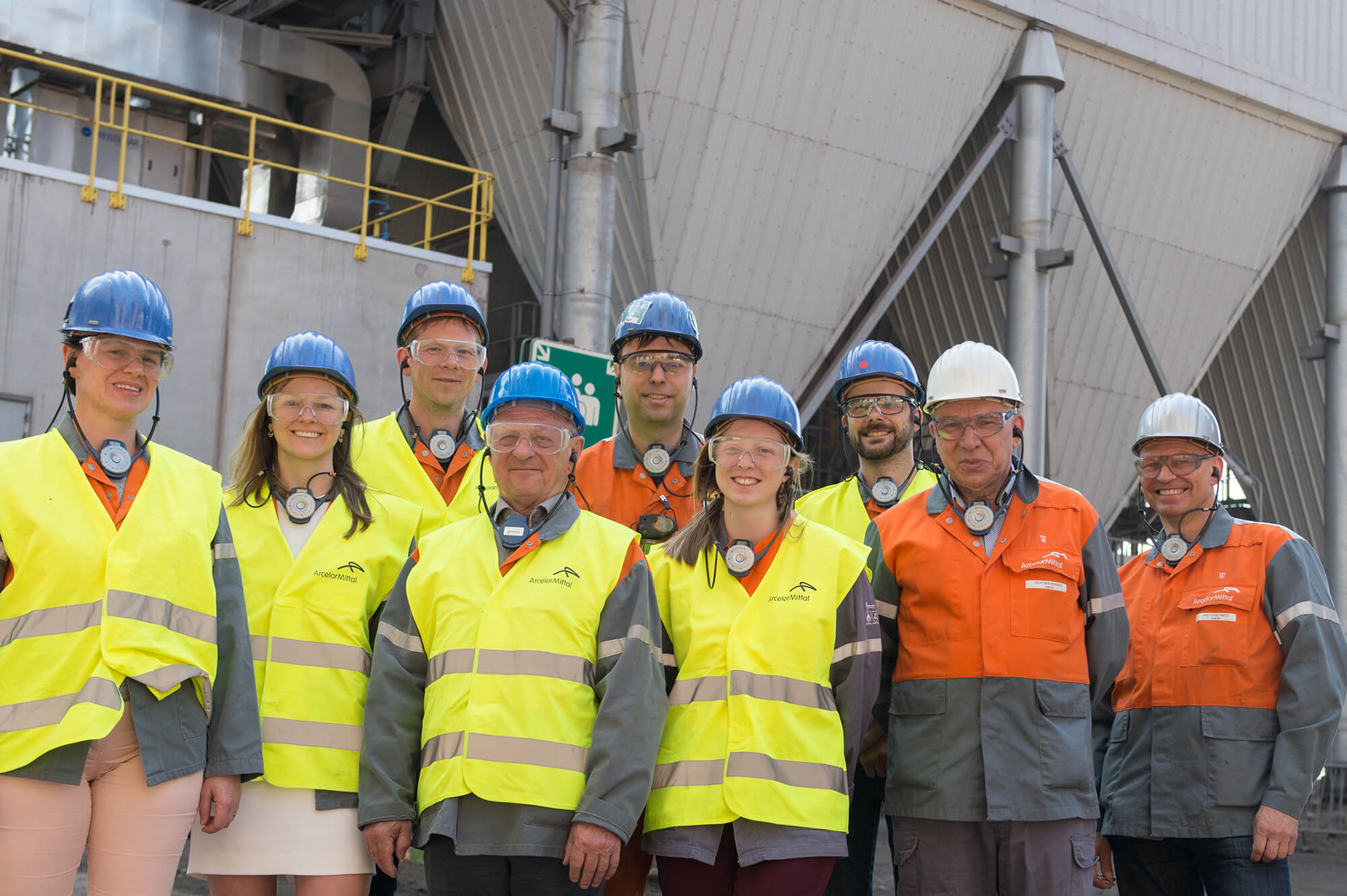
Dust control
Dust control has always been a top priority in our environmental policy. Numerous investments ensured that our dust emission is currently only 13% of the dust emission at the beginning of the 1990s.
“We spend a lot of attention on air quality and on fine dust in particular.”
Our projects
A dust study for which we commissioned VITO (2005-2006) demonstrated that diffuse emissions are particularly likely to affect the air quality in the environment of our site. In the last few years, we have therefore paid special attention to controlling this specific type of emissions. We bundled all improvement actions within a dust reduction plan running over several years, made interim adjustments and supplemented the plan with new measures. Some achievements:
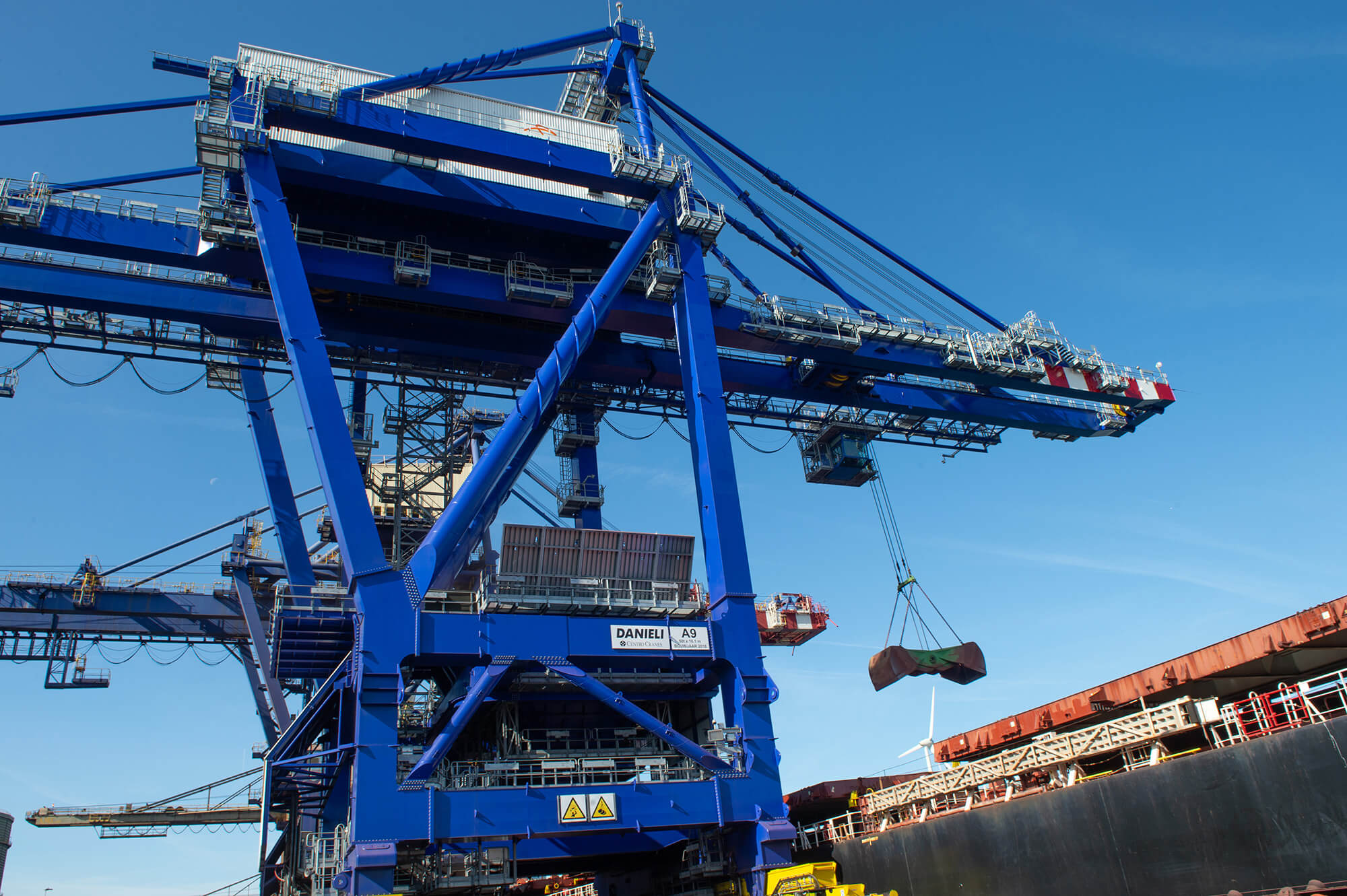
New harbour cranes with more effective spraying system and wind screens.

The creation of a dust barrier/wind dyke 10 m high and 870 m long along the Ghent-Terneuzen Canal in order to combat wind erosion from the coalfields lying at the rear of our site. This wind dyke will be completed mid 2019.

The application of a coating (incrustator) on the piles of raw materials in dry and windy weather and the creation of dust barriers to prevent wind erosion.
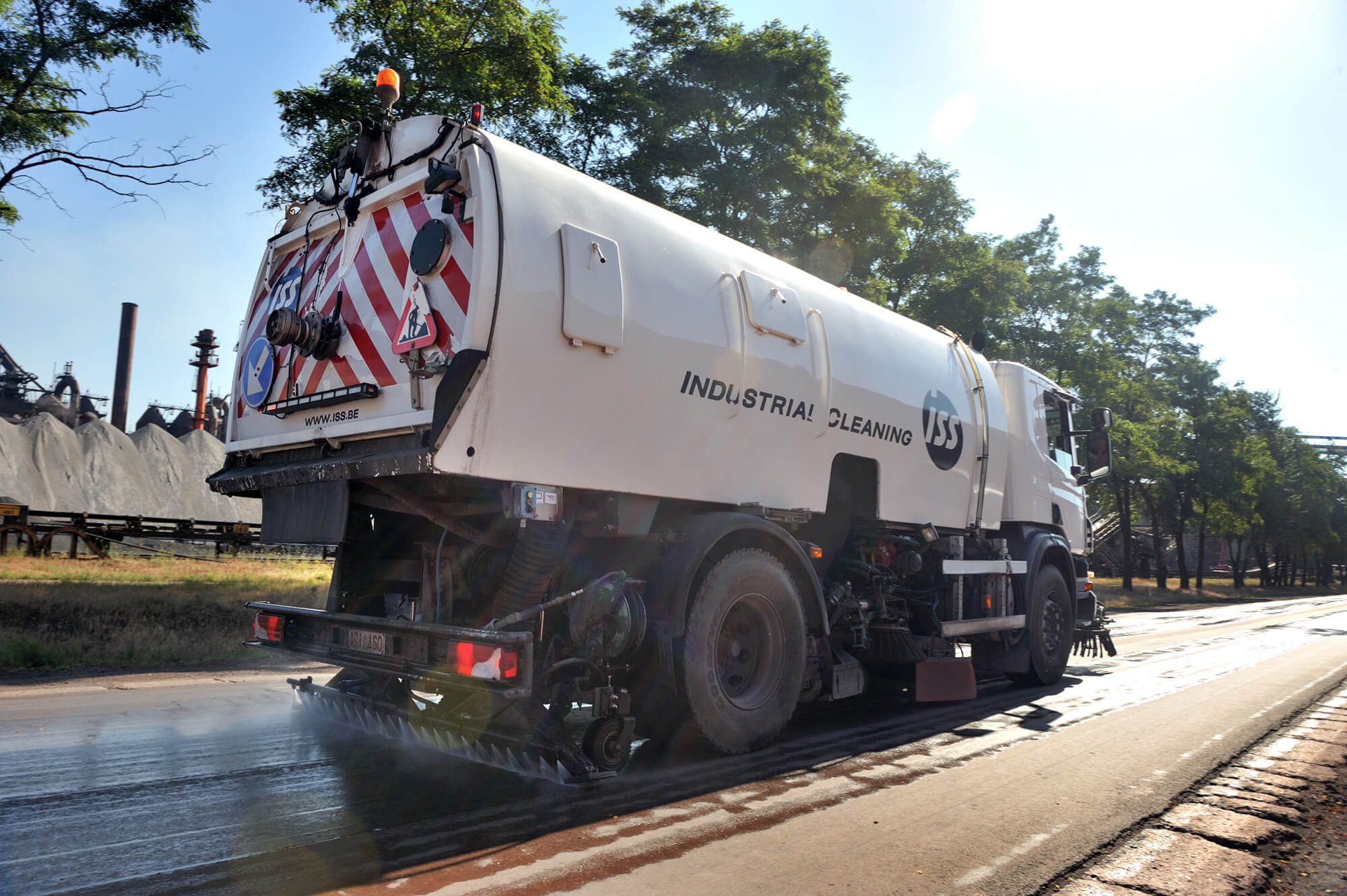
An all-out sweeping programme to keep the roads within our site dust-free.
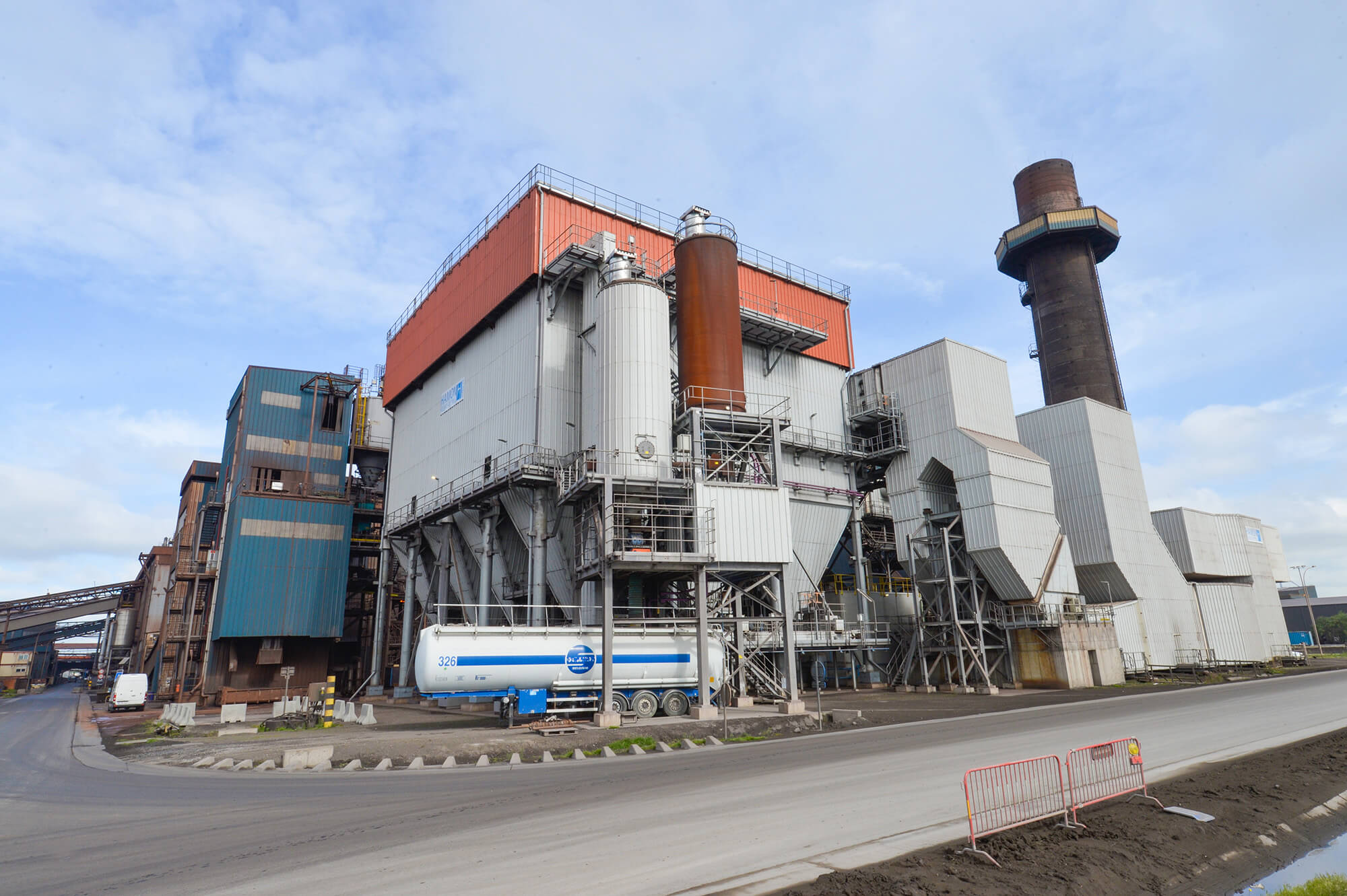
In 2017, we installed a sleeve filter installation at the casting floor of blast furnace B (11 million euros). We carried out a conversion and extension of the dust filter installations in our sinter plants. A new hybrid filter was taken in use in sinter plant 1. In sinter plant 2, we took a sleeve filter in service (at a combined cost of 21.5 million euros). Thanks to these investments, the guided dust emissions, 75% of which originates from our sinter plants, sharply fell throughout 2018.
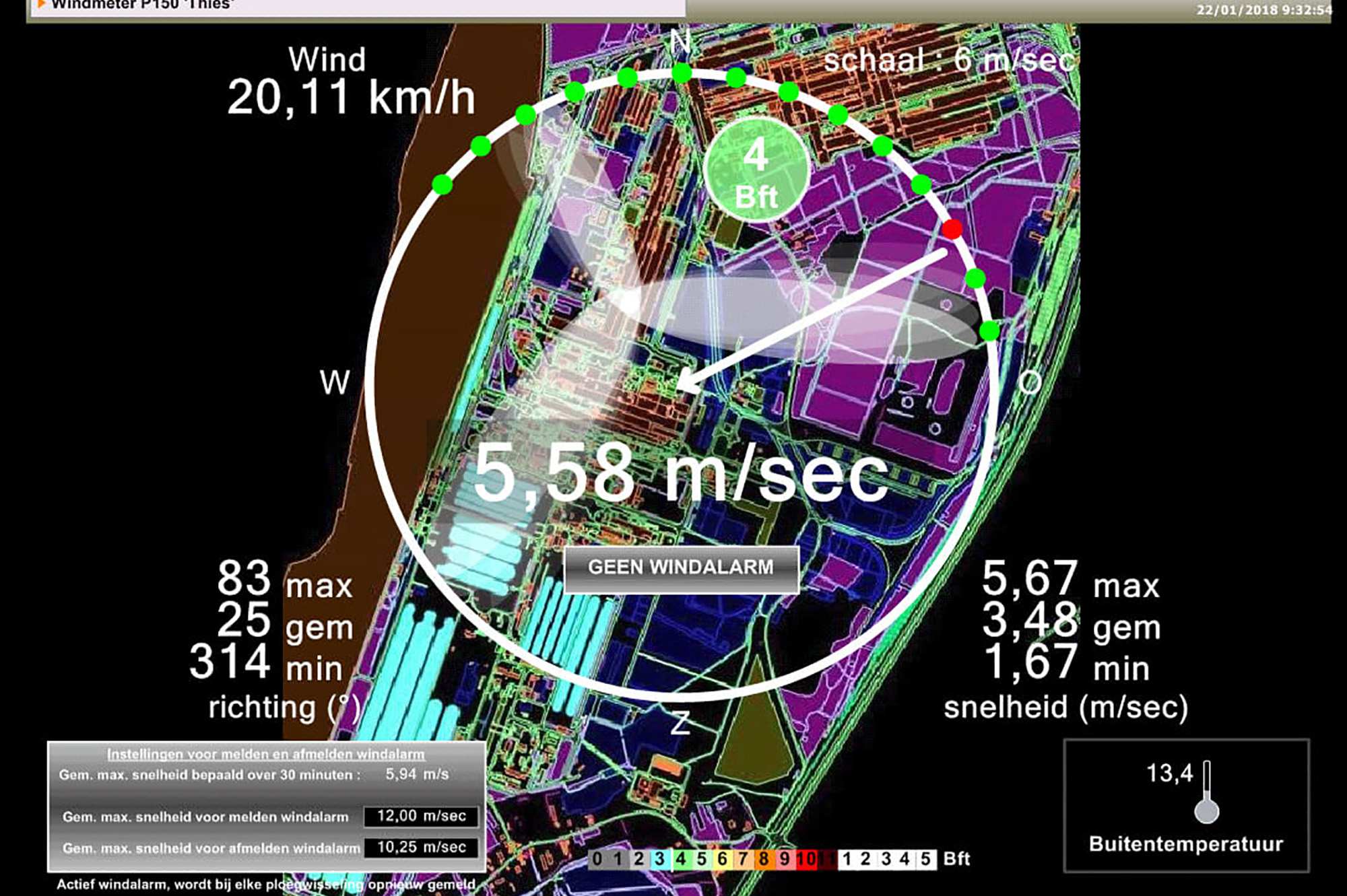
An alert system in accordance with the weather conditions.

We will continue to make efforts in the future to improve the air quality, for example by recirculating flue gas in the sinter plants (2020).
Monitoring emissions
All other emissions, such as NOx, SO2 and dioxins, are carefully monitored by means of an intensive internal measurement programme. It enables us to monitor the proper exploitation of the production and purification installations and make immediate adjustments when necessary. As far as the NOx and SO2 emissions are concerned, we also take proactive steps by carefully selecting raw materials with a relatively low level of nitrogen (N) and sulphur (S).
Land
11/2008
Blast furnace 6 in Seraing was shut down
12/2016
The blast furnace in Seraing was dismantled on 16 December 2016. The site was cleared and a soil clean-up followed. The site is earmarked for an urbanisation project by the city of Liège. The demolition and soil clean-up are in conformity with the overall agreement signed by the Walloon region and ArcelorMittal in February 2014. Phase 1, which was the soil clean-up of the undeveloped areas, is complete.
2018
Throughout 2018, studies were started for the implementation of phase 2, as part of which the sites will form part of a redevelopment project by the city of Seraing.
Water
“Our water consumption makes us one of the most economical integrated steel plants of the world.”
The steel production process requires enormous quantities of water, which is used as cooling water, process water and for environmental applications. Since water is a natural resource, we treat it with as much care as possible.
The role of water in our production process
Cooling water
Since the production process is associated with high temperatures, our facilities need cooling. For example, we cool the engines of the sinter plants, the shell of the blast furnaces, the converter of the steel shop and the rolling stands of the hot strip mill.
Process water
Process water is used in the production process itself. Examples are the water that we use to extinguish the cokes, to granulate the blast furnace slag into blast furnace sand, to remove the oxide scale from the steel slabs in the hot strip mill, and the water that we convert into steam.
Environmental uses
We also use water to control dust (for spraying unpaved roads in dry weather and in the sprinkling installations onto harbour cranes while unloading raw materials that are sensitive to dust) and in the gas scrubbing plants of the blast furnaces and the steel shop.
ArcelorMittal Liège
The water used by ArcelorMittal Liège, in the production process and for cooling the installations, primarily originates from the Meuse. After use, this water is purified and checked before it is pumped back into the Meuse.
In the last few years, we invested in water treatment plants in Tilleur, Kessales and Flémalle, ensuring that the quality of the waste water meets all the standards for discharging it into the surface water of the Meuse. In total, ArcelorMittal Belgium invested 5.3 million euros in the project (2.1 million euros for the Tilleur site and 1.2 million euros for the sites in Kessales/ Flémalle).
Furthermore, preventive measures were taken to prevent polluting the river of Cronillon, in the context of a permit for the external landfill site ‘La Chatqueue’ in Seraing.



€ 5 300 000
invested in the water treatment plants in Tilleur, Kessales and Flémalle


ArcelorMittal Gent
The main source of water for the site in Ghent is the Ghent-Terneuzen canal. The canal water is pumped up in the north of the company premises and flows upstream through the production process before it is eventually pumped back into the canal, closer to the south, after treatment in the waste purification plants, which means that the prevailing standards for discharged water are complied with. Every cubic metre of water we pump up is reused about 25 times.
In the past, we also used groundwater for specific applications. Nowadays most groundwater is only pumped up for safety reasons. For example, there is a need to keep the groundwater table within our site low, since contact with hot metal from the blast furnaces or liquid steel from the steel shop could cause an explosion. To prevent any waste of this groundwater, we use it in a number of quality-critical applications.